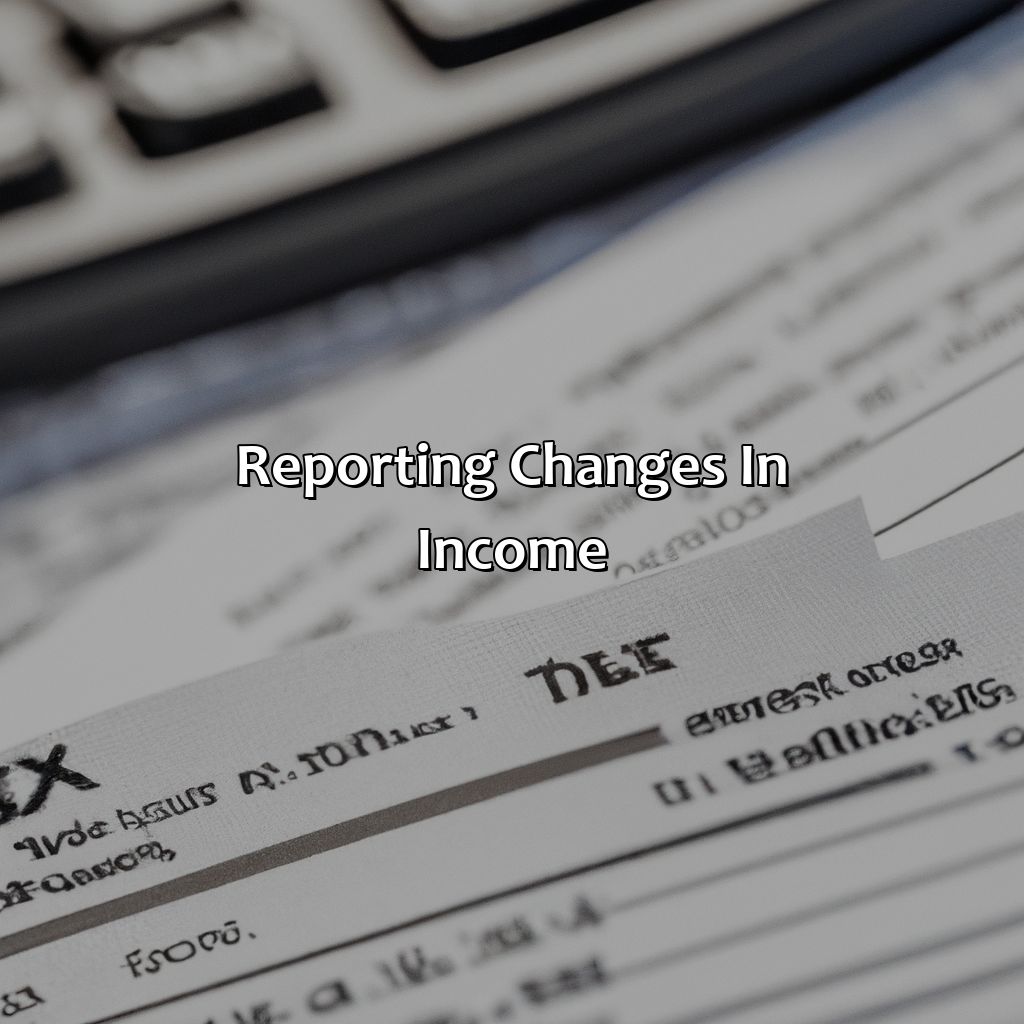How Much Of My Social Security Benefit Is Taxable In 2016?
Key Takeaway:
- Social Security benefits can be taxable: Depending on your income, a portion of your Social Security benefits may be subject to federal income tax. However, not everyone will have to pay taxes on their benefits.
- Calculation of taxable Social Security benefits: To determine the amount of your Social Security benefits that are subject to tax, you’ll need to perform a calculation that takes into account your adjusted gross income, tax-exempt interest, and half of your Social Security benefits.
- Limits for taxable Social Security benefits: The maximum amount of your Social Security benefits that can be taxed depends on your filing status and income level. It’s important to understand these limits to avoid any unexpected tax bills.
Are you concerned about how much of your social security benefit is taxable in 2016? Don’t worry, you’re not alone! In this article, we’ll review the rules and regulations concerning the taxation of social security benefits to help you understand how to maximize your income.
Overview of Social Security Benefits
Social Security Benefits are government-provided financial assistance to elderly, disabled, and surviving family members. The amount paid to them is determined based on their lifetime earnings, age, marital status, and other factors. The benefits are subject to taxation if an individual’s total income exceeds a certain threshold.
To clarify, the Social Security Administration calculates a recipient’s taxable income by adding half of their Social Security benefits to their other sources of income. For individuals, if the taxable income falls between $25,000 and $34,000, up to 50% of their benefits will be taxed. For those who earn more than $34,000, up to 85% of their benefits will be taxed. For married couples filing jointly, if their taxable income is between $32,000 and $44,000, up to 50% of their benefits will be taxed. If their taxable income is above $44,000, up to 85% of their benefits will be taxed.
It is important to note that there are some strategies available to minimize the tax burden on Social Security benefits. One such strategy is to delay receiving benefits until the age of 70. At that time, the recipient’s benefit will be higher, and it may help them avoid additional taxation on their benefits. Another strategy is to diversify income sources, such as withdrawing from a Roth IRA instead of a traditional IRA, as Roth IRA withdrawals are not included in the calculation of taxable income.
In summary, Social Security benefits are subject to taxation depending on an individual’s total income. However, there are ways to minimize the tax burden, such as delaying benefits and diversifying income sources. It is important to consult with a financial advisor to discuss individual circumstances and determine the best approach.

Image credits: retiregenz.com by James Woodhock
Taxation of Social Security Benefits
Do you want to learn how to calculate your taxable Social Security Benefits? There are two sub-sections: calculation and limits. These will provide the solutions you need. Calculate your taxable Social Security Benefits with the limits set. Get understanding of the taxation of Social Security Benefits!

Image credits: retiregenz.com by Harry Woodhock
Calculation of taxable Social Security Benefits
When determining how much of your social security benefit is taxable in 2016, it’s important to understand the Calculation of Taxable Social Security Benefits. This involves assessing your income levels and certain deductions to determine the amount of taxable benefits.
- Step 1: Add up your gross income, including wages, rental income, and investment dividends.
- Step 2: Add up any tax-exempt interest and half of your Social Security benefits received.
- Step 3: Compare these totals to the IRS threshold amounts. If your income exceeds these thresholds, a portion of your Social Security benefits may be taxable.
It’s important to note that not all taxpayers will have taxable Social Security benefits. Those with low incomes or who only receive Social Security may not meet the income thresholds. However, those with higher incomes may find that up to 85% of their benefits are subject to taxation.
Make sure you calculate your Taxable Social Security Benefits accurately and don’t miss out on potential savings. Consult a tax professional or utilize IRS resources for assistance in making these calculations.
Uncle Sam may take a bite out of your Social Security benefits, but at least you can console yourself with the fact that you’re still cheaper than a yacht.
Limits for taxable Social Security Benefits
The threshold for Social Security benefit taxation varies depending on your income. Below is a breakdown of the Limits for Taxable Social Security Benefits:
| Filing Status | Modified Adjusted Gross Income (MAGI) | Percentage of Social Security Benefits Subject to Tax |
|---|---|---|
| Single | less than $25,000 | 0% |
| between $25,000 and $34,000 | Up to 50% | |
| more than $34,000 | Up to 85% | |
| Married, filing jointly | less than $32,000 | 0% |
| between $32,000 and $44,000 | Up to 50% | |
| more than $44,000 | Up to 85% |
It’s important to note that these limits apply only to federal taxes. Many states do not tax Social Security benefits at all.
Additionally, if you receive other sources of taxable income in addition to your Social Security benefits, you may have an increased percentage of your benefits subject to taxation.
For example, my grandmother received Social Security benefits and also had a part-time job. She was surprised when she found out that some of her benefits were subject to taxation because she didn’t realize that her part-time income would affect her threshold.
Overall, it’s important to plan ahead for any potential tax liabilities related to your Social Security benefits. Consult a financial professional or use online resources such as the IRS website or AARP’s Tax-Aide program for guidance.
Filling out tax forms for social security benefits is like trying to solve a Rubik’s Cube blindfolded – frustrating and confusing.
Tax Forms for Social Security Benefits
Know your tax forms to decide how much of your Social Security benefit is taxable in 2016. Get Form SSA-1099 and SSA-1042S to report your Social Security income correctly. Utilize Form 1040 and tax software to help you submit your taxes precisely.

Image credits: retiregenz.com by David Arnold
Form SSA-1099 and SSA-1042S
Social Security Benefit Tax Forms – Discover more about Form SSA-1099 and SSA-1042S
Form SSA-1099 and SSA-1042S are tax forms that record the total amount of social security benefits received during the year. The information on both tax forms is needed to calculate how much, if any, of a person’s Social Security benefit may be taxable.
Below is a table illustrating some key differences between Form SSA-1099 and SSA-1042S.
| Tax Form | Issued By | Purpose |
|---|---|---|
| Form SSA-1099 | Social Security Administration (SSA) | Reports total benefits paid in the prior calendar year earned from social security. |
| Form SSA-1042S | Nonresident Alien Income Tax Withheld (NRA) | Reports total social security benefits paid after taxes were retrieved for non-US citizens who are beneficiaries. |
It is important to note that for most people receiving Social Security benefits, their payments are not subject to taxation. However, there may be certain circumstances where part or all of the Social Security benefit will be taxed, such as when a person has other sources of income like wages or investments that exceed a certain threshold.
Completing tax forms related to Social Security can seem complicated. But take heart! Each year in January, the Social Security Administration mails either or both Forms SSA-1099 and 1042s to beneficiaries which detailed payments made so that they may provide them when preparing their Federal tax filings.
Did you know? More than 65 million Americans receive some form of Social Security Benefits each month!
Form 1040 and tax software – because who needs a headache when filing taxes can already give you one.
Form 1040 and tax software
The Integration of Form 1040 and Tax Software
Form 1040 can easily be prepared on tax software by following these simple steps:
- Download or purchase a tax software program that supports Form 1040.
- Enter your personal information, including social security number and income details.
- Utilize the software’s built-in calculations to compute taxable social security benefits.
- File your completed Form 1040 electronically or by mail.
It is important to note, however, that not all tax software programs are created equal. Ensure the software you choose is equipped to handle the intricacies of social security benefits taxation.
When filing your taxes, it is crucial to understand how much of your social security benefit is considered taxable income. Failure to report this accurately may result in penalties and interest fees from the IRS.
Make sure you do not miss out on potential deductions and credits by utilizing compatible tax software for Form 1040. By accurately reporting your taxable social security benefits, you can ensure financial stability for years to come.
Time to update the ol’ income report, or as I like to call it, my annual reminder that I’m not as financially stable as I thought.
Reporting Changes in Income
To accurately report any changes in your income, it is crucial to understand the tax implications and how they affect your Social Security benefits. Failure to report changes in income can result in underpayment or overpayment of taxes. Thus, it is important to keep updated records of your earnings and to report any changes promptly.
Proper reporting of income changes is necessary because it can affect the taxable amount of your Social Security benefits. The precise tax amount that you will pay on your Social Security benefits depends on your combined income, which is the total of your adjusted gross income, nontaxable interest, and half of your Social Security benefits.
It is worth noting that reporting changes in income is not a new requirement. The Social Security Administration has always mandated that beneficiaries report any changes in their income, including pensions or wages, since Social Security benefits are based on your lifetime earnings. Failure to report these changes can have serious financial repercussions, hence the importance of being vigilant.
In 2016, the taxable amount of your Social Security benefits is determined by your income level. Failure to report changes in income can lead to unexpected tax bills or missed opportunities for tax deductions. Following the guidelines and requirements set by the Social Security Administration can help ensure that you receive the maximum benefits you are entitled to.

Image credits: retiregenz.com by Joel Jones
Some Facts About How Much of My Social Security Benefit is Taxable in 2016:
Up to 85% of your Social Security benefits may be subject to federal income tax. (Source: IRS)
The amount of tax you owe on your Social Security benefits depends on your income level. (Source: SSA)
There are special rules for calculating the taxable portion of Social Security benefits if you receive other sources of income, such as pensions or IRA distributions. (Source: Kiplinger)
Social Security tax withholdings can be adjusted to help avoid having to pay a large tax bill at the end of the year. (Source: AARP)
There are some states that exempt Social Security benefits from state income taxes. (Source: The Balance)
FAQs about How Much Of My Social Security Benefit Is Taxable In 2016?
How much of my social security benefit is taxable in 2016?
In 2016, up to 85% of your social security benefit may be subject to income tax if your total income exceeds certain thresholds.
What is the income threshold for social security taxation in 2016?
The income threshold for social security taxation in 2016 is $25,000 for single filers and $32,000 for those who are married filing jointly.
How is the taxable amount of my social security benefit calculated?
To calculate the taxable amount of your social security benefit, you must add together your adjusted gross income, any tax-exempt interest income, and one-half of your social security benefits.
What is adjusted gross income?
Adjusted gross income is your gross income minus certain deductions, such as contributions to a traditional IRA or alimony payments.
Can I reduce the amount of my social security benefits that are taxable?
There are some strategies you can use to reduce your taxable social security income, such as reducing your overall income or making charitable contributions.
Are social security benefits taxed at the state level?
Whether or not social security benefits are taxed at the state level depends on where you live. Some states tax social security income, while others do not.
 Checkout this IRS Loophole
Checkout this IRS Loophole 
